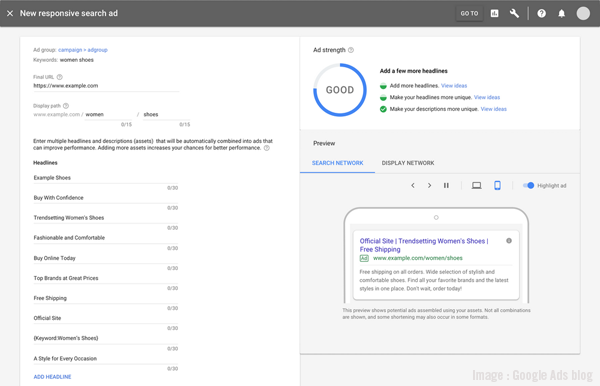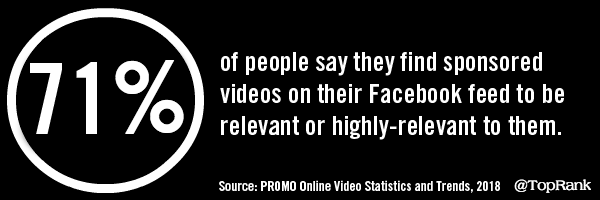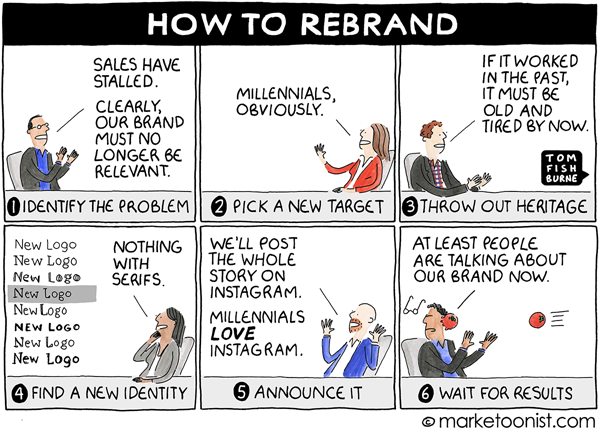Transcript of How to Create a Morning Routine that Breeds Success written by John Jantsch read more at Duct Tape Marketing
Back to Podcast
Transcript
This transcript is sponsored by our transcript partner – Rev – Get $10 off your first order
John Jantsch: There’s a lot of people that believe how you start your day is how your day is going to pretty much unfold. Your morning routine dictates how inspired you’ll be for the day. In this episode of the Duct Tape Marketing Podcast, I speak with Benjamin Spall, he’s the author of My Morning Routine and also MyMorningRoutine.com, where they have collected all the morning routines of hundreds of successful folks, and it’s definitely something you’re going to want to check out.
Stuff like payroll and benefits are hard, that’s why I switched to Gusto. And to help support the show, Gusto is offering our listeners an exclusive, limited time deal. You sign up for their payroll service today, you’ll get three months free, once you run your first payroll. Just go to Gusto.com/tape
Hello and welcome to another episode of the Duct Tape Marketing Podcast. This is John Jantsch, and my guest today is Benjamin Spall. He is one of the founders of My Morning Routine, and also a co-author of My Morning Routine: How Successful People Start Every Day Inspired. So Benjamin, thanks for joining us.
Benjamin Spall: Thanks for having me, John.
John Jantsch: So some people collect bugs, and some people collect coins, and you collect morning routines.
Benjamin Spall: I guess that’s true, yeah. We’ve, since buying the website about five and a half years ago, I think we’re just coming up on 300 routines on the website. And then, for the book, about 30 or 40 more. So yeah, it’s quite a collection now.
John Jantsch: So what, and this is a really hot topic, but, so I know there’s a lot of content out there around this. But I’m just curious what, in your research has shown, what are some of the known benefits of having a morning routine?
Benjamin Spall: Yeah, so the main benefits, and we found, what was not surprising, when we spoke with people, especially kind of high level people that we could get for the book was that, basically, everyone we spoke with does have a morning routine. And of course you could say that’s somewhat self-selective. But we found that when people have this productive kind of healthy morning in which they can meditate, they can do some working out, or they can just spend time calmly in a calm environment with their family. When they have that time in the morning, they can take the benefits of that with them for the rest of the day. So many people, especially people who work out or who run, they mention that if they don’t do it in the morning, they’re unlikely to do it later on in the day. And that’s another benefit. Just actually kind of getting the things in that, they’re not your main task of the day. It’s not like a project you’re working on. Just something that you want to do every single day, regardless of how your morning goes.
John Jantsch: And it’s funny, you mentioned, we all have routines. And, I mean, we can call them habits, too, I suppose, in a lot of cases. And some of them aren’t necessarily healthy. So I think what you’re talking about are really, ideally, the subtitle is, Start Every Day Inspired. You’re talking about actually developing healthy routines. I remember when my kids were little, a lot of the routine was about getting them fed and out the door, and it was not necessarily about me meditating.
Benjamin Spall: Right. That’s exactly right. And we do actually have a chapter on parents, specifically focusing on parents with young children, in the book. Because we wanted to point out that even though having a morning routine obviously isn’t going to be as easy for parents of young children, we wanted to point out, for example, through some of the interviews we’ve got in there, that it is still possible. You just, for the most part, have to get up a little bit earlier and kind of figure out what your kid’s own routine is. But that’s your point about healthy verses on healthy habits. We do mention the book, kind of the importance of changing some of these habits.
So many of the people that we spoke with, both on the website and for the book, mentioned kind of a phenomenon of waking up, and the first thing they do is pick up their phone and kind of hold it a couple of inches from their face, while they scroll through Twitter, they scroll through Instagram. And that, for the most part, is an unhealthy habit. So we kind of give ideas to how you can stop doing that, and kind of replace it with something that’s a little bit better for your morning.
John Jantsch: Well and I know we talked about, or I know a lot of people talk about the mental health benefits of having that kind of time where you focus, you collect your thoughts, maybe you journal, that kind of stuff. Certainly, a lot of the routines involve physical activity. And I know from my standpoint, I think running your own business, like many of my listeners do, is physically demanding. And I think exercise pays off in spades from that standpoint. But I would also say that, I’m much more productive throughout the day, if I get the day started right. Do many of the folks that you talk about or talk to list that as, really, a benefit?
Benjamin Spall: Oh totally, yeah. We actually, at the end of every single interview, almost every interview, we ask the person we’re speaking with what they’d do if they fail to follow their morning routine. And so many people told us, if they fail, there could be a certain element, they could do the X amount say, for example, and not have time. Or it could be the whole thing. They could just wake up a couple of hours late, and in that case, you probably just need to get to work, whether you’re employed, or whether you have your own business, you probably just want to get down to it. And so many people told us that if they failed a part of their routine, if kind of messes up their whole day. And they really struggle to complete the work they would be getting on with, because they kind of have this spark of not working out, not meditating.
So although in that situation, we do encourage people to get back on at the next thing. You know, don’t see one mistake as failure. It does affect your day if you don’t kind of have that morning time in which you can settle into the rest f the day.
John Jantsch: Yeah I think there’s a lot of research about that idea of trying to start a new habit. They say it’s not the day you start, it’s the day you fail to do that new habit. That getting back up and doing it again the next day is actually the key to success.
Benjamin Spall: Yeah. We mentioned, in the book we mentioned, Jerry Seinfeld has this idea of, I can’t remember what he calls it, but he puts a, he has a calendar. And then every day, he writes a joke, he puts a cross on that day on the wall calendar. And the idea is to no break the chain. So every single day, he wants to do it. And he doesn’t want to break that chain. But we mentioned in the book, even though that’s a great idea, and it’s very motivating, if you do that, and then one day you do forget to do your thing, whether it’s writing, whether it’s something to do with business, you can feel pretty unmotivated the next day. You can think, “I’ve just broken a 60, 90 day chain. And that can make you feel like you don’t want to get back to it.
So we mentioned in the book, and it’s kind of mixed in with our failure question. If that happens, just don’t worry about it. Just start again. And just don’t see one missed day, or even two missed days, as a setback. Because the ultimate setback is giving up on the thing you want to do overall.
John Jantsch: I’m sure some of the folks that you … And we’re going to get into some of the specific routines. But I’m sure some of the folks that you talked to also expressed this. I know for me, in many cases, my morning routines sometimes starts the night before. Depending upon getting to bed at the right time, did I drink too much wine? You know, have I given some thoughts and sort of unpacked the day, and put that away? For me, that, sometimes, is going to dictate how I’m going to start the next day.
Benjamin Spall: Yeah, no, evening routines, whether kind of after you’ve finished work, the way that you finished your workday and actually before you go to bed, they’re incredibly important. And someone actually said to us for the book, something along the lines of her evening routine and her morning routine is just like one continual routine with sleep in the middle. But yeah, evening routines are very important. First to get you in the frame of mind to actually fall asleep, and that’s especially hard, as many of us nowadays, we check our phone, we have all that blue light kind of streaming in, keeping us awake. But also to kind of help you calm down and get ready for the day ahead.
So one thing we mentioned, and we steal this from Cal Newport, who we also spoke with for the book, he’s the author of Deep Work, among others. And he said something along the lines of, you have this shut down ritual. This is more at the end of your workday than just before going to bed. So he has this idea of, you kind of want to have all your chickens in a row, as they say. So you kind of shut down your computer, you kind of check to make sure that everything on your calendar is set, and you know what you’re doing the next day. And then you completely shut down your computer. You don’t fold the laptop, you completely shut it down. And that is intended kind of as a metaphor to shut down your mind, and make it easier for you to enjoy the evening, and then get to sleep at the end of it.
John Jantsch: I actually have the luxury of living about three quarters of a mile from my office. And I really cherish that walk home at the end of the day, because it really is my time to really kind of let it all go. Let’s talk about some of the actual routines. Did you discover patterns? I mean, were there things that pretty much everybody, or certainly a lot of people do?
Benjamin Spall: Yeah. I mean one of the things that, not everybody, but a lot of the people we spoke with do is working out. And that could be, it could be incredibly extreme. Like we spoke with General Stanley McChrystal, and his workout routine starts at 4:00am and it’s pretty intense. And it could be something as simple as just doing some light stretching, or going to the gym for 15, 20 minutes a day. But what we found that was most fascinating to us is, even though we spoke with on morning workouts in the book, and running in the morning and such and such. It’s actually not that important what time of day you do it, so long as it works for you and you actually do it.
So we spoke with many people, including Bill McNabb, who’s chairman of Vanguard, the Vanguard Group. And he told us that he always works out around lunchtime. And I, personally, do the same. I work out just before lunch. Because, like him, I prefer to do kind of my creative, my productive work first thing. And then the gym kind of pumps me up for the rest of the afternoon. Whereas if I do it first thing in the morning, which I do do occasionally, it kind of just tires me out, if I’m honest. So working out in the morning definitely works for a lot of people, but just getting it in in general is the main thing.
John Jantsch: That’s interesting because I’m a morning, I mean, I’m a 6:00am workout-er. If I come to the end of the workday thinking, “I’ll just get it in later.” I’m just too mentally tired for that point to want to do it.
Benjamin Spall: Right.
John Jantsch: But that could, again, just be habit. I do think one of the sort of downsides, if you will, to routine and habit is that it just makes it easy for you to go, “Oh well, I didn’t get it in this morning, so the day’s shot.”
Benjamin Spall: Right.
John Jantsch: That’s probably something to work on, to look out for.
Benjamin Spall: Yeah, we talk a lot in the book about habit stacking, which is effectively kind of having an order to these different routines. So if you meditate, after you meditate, you may do your workout, for example. And even though you don’t always have to stick to that habit, if you have kids running around, you’re probably going to have to change stuff from time to time. Just to stick to it if you can, because as you say, then you don’t allow yourself to push it later on. And that is one of the benefits of the morning routine, is you get these little things in. You get working out, and you get meditating, you get self care. Anything that can really help you with your life and with your business, you get that in first thing. So then the rest of the day is kind of golden, you don’t have to think about it anymore.
John Jantsch: Wouldn’t it be great if, in your business, all you had to do was the stuff you love? The reason you started the business. And not all that administrative stuff like payroll and benefits. That stuff’s hard. Especially when you’re a small business. Now, I’ve been delegating my payroll for years to one of those big, corporate companies. And I always felt like a little tiny fish. But now there is a much better way. I’ve switched over to Gusto, and it is making payroll and benefits and HR easy for the modern small business. You no longer have to be a big company to get great technology, great benefits, and great service to take care of your team. To help support the show, Gusto is offering our listeners an exclusive, limited-time deal. If you sign up today, you’ll get three months free, once you’re on your first payroll. Just go to gusto.com/tape.
In some of your interviews that you’ve done, especially on the website, are there a handful of what I would call quirky routines that kind of stick out? And you think really? You do that every day? Anything that you can categorize or characterize that way?
Benjamin Spall: Yeah, there were definitely some where I kind of questioned how truthful people were being. I think, for the most part, I think people were saying the truth. But I do think sometimes people were giving a more idealized version of their routine. And there’s definitely some benefit to that. We’ve had a few people tell us, they told us their ideal routine, something that they do maybe two out of five days of the week, during the work week. And then after we published it online, they’re kind of like, maybe I should actually stick with that. So it kind of helped pushed them to actually do that every single day. So obviously, it’s now going to be published, the way I would say is a great way of helping you stick to your routine is actually just writing it down. Especially if it’s kind of a checklist for every single day.
I use this with Eleanor, I use this and that, and it creates a new note for me every day. And that just has my same things, every day, the same stuff comes around and I just have to do it again. I have to do it over and over again. And that’s a great way to remind me of what I need to do, even though you’ll very quickly remember, as long as you’re not changing things too often. Actually I’ve shown you, here’s another thing, you popped it off your list yesterday, but now you have to pop it off your list again. And even though, as I mentioned earlier, you’re never going to be perfect. You are sometimes going to forget parts, and you’re just going to have to be okay with that. It’s a great way to stop you from actually forgetting what you need to be doing.
John Jantsch: That’s interesting because there is a lot of power for a lot of people in the to do list. If it’s there on the list, they’re maybe going to check it off. So that’s a nice tip. So one of the things I love is, I’ve got about one, two, three, four, five, six, six journals on my shelf that all have one routine or another for kind of a morning and evening ritual. They’ve become really popular, as you know. In fact, I’m sure you guys probably have one in the works, a companion. But did you get any sense for, a lot of people have good intentions of doing those, the journaling, that’s an example. Is there, there’s research that suggests it takes 21 days or something in a row of doing something to actually establish a habit. Did you get any sense that people talked about how they establish something they wanted to do into their routine, but wasn’t something that they were naturally doing?
Benjamin Spall: Yeah, no, for sure. We had many people, and I would say meditation is probably the thing that this relates to the most. We had quite a lot of people tell us, both for the book and the website, again. That they have tried to mediate, tried to create a meditation practice. But they struggled, and they eventually just gave it up because it wasn’t working for them. And although, many hardcore meditators may say that the struggle is what you push through, ultimately, and I said this in the book, ultimately, if something really isn’t working for you, and you’re not particularly interested in making it work, then that’s okay. As long as you give it a chance, give it a few weeks. We don’t say anything in particular like 21 days. We kind of just say, give it a little bit of time. And if it’s clearly not working for you, then that’s fine.
And we do hope people experiment with a lot of the things in the book. The morning workouts, the self care portion, kind of being productive in the morning. But at the same time, we don’t want to be really prescriptive, and we don’t want to tell people, for example, you have to wake up at 5:00am to be successful. Because we kind of think a lot of that is actually garbage, and you can wake up at 5:00am, but you know you don’t have to. So we don’t want to be too prescriptive. We wanted to give people a bunch of ideas. And many of these ideas have worked for people that we’ve spoken with, but we didn’t want to kind of tell people what to do.
John Jantsch: Yeah that meditation thing, I think what trips people up is that they think something’s supposed to happen while they’re meditating. And when it doesn’t, that’s like, really hard for us, especially type A type kind of people to deal with. So what is your morning routine look like?
Benjamin Spall: Yeah, mine is very simple. It’s actually quite disappointing, compared to some of the people in the book. But okay, so the main thing I’ve done, and it took me a while to do this, which is why there’s a little bit of repetition in our book, and that’s on purpose, because we want to keep hammering home certain points. And so, as of about a year or so ago, I’ve been keeping my phone in the kitchen overnight, and I now have an analog alarm clock. And it’s on airplane mode in the kitchen. And if I can help it, if I don’t have an early morning meeting or call, I don’t take it off airplane mode until I either leave the house or sit down to work. And that has worked incredibly well for me.
Because it means, at night, for an hour or so before going to bed, I’m not scrolling through Instagram and letting that blue light in. And it means that in the morning, when I get up, I can actually just have a, as much as possible, kind of a calm morning. I might read a book while making breakfast. And then I can have breakfast with my wife without thinking about an email I just read, or something that kind of riles me up. So that has been a great addition to my morning.
Another thing I do is, I meditate for just 10 minutes. And this kind of goes to the point you said about expecting something to happen. When I meditate, nothing’s really happening except for the most part, I’m kind of just organizing my day, and maybe even my week. Trying to think through my tasks that day, or the tasks I can remember for that day. What is most important? What should I do first? What should I do second? And what is important, not just for today, but for the next week? For the next fortnight? For the next month? For a while out. And so that’s kind of what I do the meditation for.
And the reason I only do it for 10 minutes is, and I mention this in the book, because when you start a new habit, you kind of want to keep it as short as possible. Because if you start out with a half hour meditation, for example, or you want to run for an hour, you are not going to stick with that. You’re going to stop doing that within maybe one or two days. And you really need to start small. So I’ve brought my meditation practice back, say three or four months ago now. And I could probably extend it, at this point, I could probably extend it to 15 minutes, half an hour. But right now, I’m happy at 10 minutes. So I’m kind of just leaving it at that.
John Jantsch: So do you find yourself, because I think one of the things, to your point about, “I’m going to go run for an hour.” Do you, you see all these routines, and you collect these routines. Do you find yourself sometimes going, “Oh that’s a great idea, I should add that to my routine.” Or do you feel just completely comfortable in what you’re doing?
Benjamin Spall: It’s weird, yeah. So we’ve quit doing the website for five and a half years now, so I generally keep mine pretty simple. Even though I do get a lot of benefit in pretty much every interview, because I edit it before it goes off, pretty much every interview I edit, I definitely see some benefit in. And I’m like, “Maybe I’ll try that out.” So that’s kind of the beauty of it kind of going through the book as well. You can kind of jot down these ideas or underline, or draw between the pages. And you don’t have to add it in immediately, but just to have that idea in the back of your mind, so the leaving my phone in the kitchen, that was mentioned time, and time, and time again before I eventually did it.
So you don’t have to do it right away. But especially when you start to hear these patterns, and hear these ideas that come up time and again, it really pushed you to do those things.
John Jantsch: And it is just a fact of email, no good email comes in the morning. So that’s why you don’t want to read it first thing in the morning, right?
Benjamin Spall: Yeah exactly. Even if I’m working from a coffee shop first thing in the morning, for example. If I’m waiting for my coffee to arrive, sometimes I’ll take out my phone and I’ll get this desire to check my email. And I’m like, well actually, my coffee’s going to be here, I’m going to be checking my email on my laptop in about five minutes time. I don’t need to look at it now. It doesn’t make any difference. So yeah, totally, just giving yourself that peace for a little bit longer is a great way to go.
John Jantsch: So Benjamin, MyMorningRoutine.com, is where people can find your routines on the website. And where can they find a copy of My Morning Routine the book?
Benjamin Spall: Yeah, pretty much everywhere. Amazon’s a great place, Barnes and Noble, your local bookstore. And yeah, if you go to MyMorningRoutine.com, that’s the main website. And then if you go to MyMorningRoutine.com/book, that’s where you can find links to everywhere you can buy it.
John Jantsch: Awesome. Well Benjamin, thanks for joining us, great read. And hopefully, we’ll run into you some day on the road.
Benjamin Spall: Yeah, thanks for having me, this was great.

from Duct Tape Marketing https://ift.tt/2wtE9YT
via
IFTTT






 Kenna Hilburn serves as Liveclicker's Director of Account Development, leading an international team of account management professionals in client services, satisfaction, and growth. In her role, she is able to share her expertise in both the email marketing and video commerce industries with clients targeting an ever-changing, global marketplace.
Kenna Hilburn serves as Liveclicker's Director of Account Development, leading an international team of account management professionals in client services, satisfaction, and growth. In her role, she is able to share her expertise in both the email marketing and video commerce industries with clients targeting an ever-changing, global marketplace. 


 This week on the Duct Tape Marketing Podcast, I chat with
This week on the Duct Tape Marketing Podcast, I chat with 